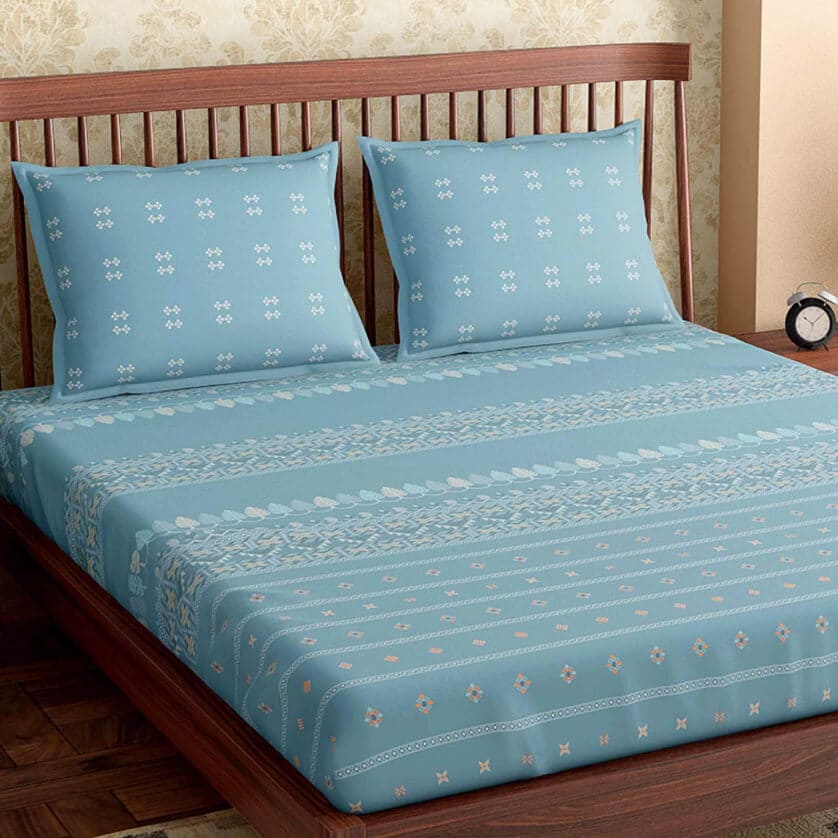Fitted Sheets

Fitted sheet has four elastic corners used to hug the perimeter of your mattress. A fitted sheet doesn’t easily wrinkle, keeping the sheet in place all the time
Fitted sheets need to be specifically sized to complement the mattress dimensions. If the fitted sheet is too big, the sheet will fall off. If it’s too small, you’ll have trouble getting the elastic over the mattress corners.
Fitted sheets are easy to put-on, since they have defined corners










